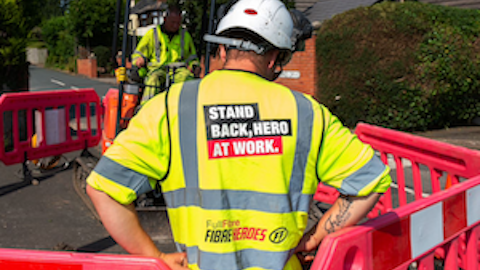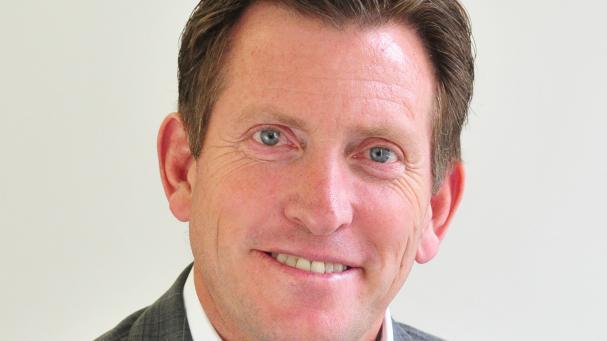Broadband provider Brsk's full fibre broadband service is now live in the first areas of Accrington.

Dirty fibre connections are the number one cause of fibre network failures. Yet, out of the many tens of thousands of connections made in our Fibre Exchanges (FEXs) last year, we didn’t suffer a single occurrence. Achieving this was no happy accident though. Fibre cleaning, regardless of the operator, is a vital part of every fibre engineer’s role because the issues that can occur if standards slip can impact many thousands of services reliant on that a network. Zero tolerance working practices are therefore vital to back promises of high-quality services and maximum reliability.
A single fibre strand is no thicker than a human hair, along it, lasers send data as pulses of light. Any dust, dirt or even grease on a fibre is impossible to see with the human eye, yet capable of causing the transmitted light to bend or refract, which in turn causes service performance issues. Within a CityFibre FEX a single microscopic speck of dust could feasibly lead to a data communication failure that impacts anything from a few hundred to tens of thousands of end customer services at once (depending of course where the compromised connection is located within the network).
The modern network nemesis
If an engineer unplugs a fibre connector for a few seconds and then connects it again without cleaning it first, this alone can be enough for a speck of dust to attach itself. Even if it’s cleaned perfectly but then isn’t quite pushed into place fully, a tiny air gap can enable dust to enter later. Whatever the cause though, any debris that gets inside can then break up and spread wider. As well as degrading signal performance, it can also cause damage to the connectors themselves.
In a way, dust is to fibre connections, what water ingress is to the copper networks that still serve much of the UK. Both can be tackled, but thankfully dust is a lot more predictable and manageable than the great British weather – especially when the fibre network is modern-built for the data age.
Perfection is possible!
Unlike Telephone Exchanges of old, all our FEXs benefit from climate control and dust-filtration. Even with this though, it’s impossible to eliminate every microscopic dust particle from within. Our own engineering teams, as well as third party engineers, regularly need to enter FEXs, and, as connections on our network grow and the network itself expands, this foot-traffic will become even more frequent. By investing in the right tools and technology and enforcing a zero-tolerance policy on poor fibre inspection, cleaning and testing processes though, we’ve proven that it is possible to prevent dust and debris causing any issues within our FEXs.
Everyone who works at CityFibre is committed to building a network and service experience that’s Better By Design, and everything we do is part of this. With any journey though, it’s easy to take routine, well-established tasks for granted as new or more complex challenges arise. Complacency is the enemy of the fibre network though, especially in a FEX. Once a connection is in and the first customer is live you can’t just go back later and disconnect a fibre just to clean it – not unless a fault is reported. It’s therefore essential to ensure steps are followed correctly at the outset. It might take three, five or even ten times longer to do these steps right, but it can be the difference between having to return next week or never!
All the third-party fibre engineers who touch our network (as well as our own people) are required to have the right testing and cleaning equipment. They must then use it to test and clean every fibre connection, every single time with no exceptions. Once ‘scoped’ and cleaned, a pass/fail software check must then be run. If it fails, the clean and test process must be repeated as many times as needed to secure the pass result.
Photographic evidence of good connections and successful tests are also required by us. These are uploaded into our system for validation by service operations before any fibre connection job can be closed. Until recently this validation process required human eyes, however the rollout of Deepomatic’s visual automation technology across our network is now changing that.
Quality over quantity
Today in CityFibre, “Inspect and clean before you connect” is the mantra that every engineer working on our network knows and respects. We acknowledge though that if they didn’t have to inspect and clean fibres meticulously, they could do four to five times more FEX fibre patching jobs each day. This means it’s important to make our quality over quantity priorities crystal clear. It’s not until you see the results of a correctly followed end-to-end process though, can you truly appreciate why this approach is worth it.
Some may think the use of AI to support the best outcomes is a bit ‘big brother’, but for us it’s about empowering and supporting every fibre engineer to take the time to help deliver a high-quality network – knowing that every connection counts. Our procedures remind them what they need to do at each step, technology is there to guide them if something isn’t right and the use of AI and visual automation means that when they close a job and leave site, they know the system has recorded another job well done.
Because of the rapid rate at which we’re building, if we were to lower our standards to allow even a small tolerance in exchange for more productivity, it would bite us in the future and our partners and their customers would be the ones to suffer. Quality is therefore the route we choose - ensuring more customers are connected right first time to a more reliable network.
A fibre-optic patch cord (also known as connectorised fibre) is a fibre-optic cable with a cap at either end, protecting connectors that are used to plug directly into equipment for an instant, high quality data connection. These cables are used in our access network and within our Fibre Exchanges (FEXs) to carry data between different types of network equipment. If a connector in a FEX is dirty, service-impacting problems can occur – potentially affecting thousands of customers at once.




